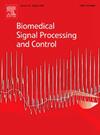基于脑电图的运动图像分类特征重加权
IF 4.9
2区 医学
Q1 ENGINEERING, BIOMEDICAL
引用次数: 0
摘要
使用无创脑电图(EEG)信号对运动图像(MI)进行分类是预测肢体运动意图的关键。卷积神经网络(cnn)已被广泛应用于MI-EEG分类,但脑电信号的低信噪比、非平稳性和非线性以及特征映射中不相关信息的存在等问题会降低分类性能。这项工作提出了一种新的特征重加权方法来解决这些问题,通过引入一个特征重加权模块来抑制不相关的时间和通道特征。该模块生成相关性分数,对特征图进行重加权,从而减少噪声和不相关数据的影响。实验结果表明,在Physionet运动图像和BCI Competition IV-2a数据集上的MI-EEG分类有了显著的改进,与最先进的基于cnn的方法相比,性能分别提高了9.34%和3.82%。此外,该方法在语音图像和运动任务上均表现出竞争或优越的性能,突出了其泛化性和鲁棒性。本文章由计算机程序翻译,如有差异,请以英文原文为准。

Feature reweighting for EEG-based motor imagery classification
Classifying motor imagery (MI) using non-invasive electroencephalographic (EEG) signals is crucial for predicting the intention of limb movements. Convolutional neural networks (CNNs) have been widely adopted for MI-EEG classification, but challenges such as low signal-to-noise ratio, non-stationarity, and non-linearity of EEG signals, along with the presence of irrelevant information in feature maps, can degrade performance. This work proposes a novel feature reweighting approach to address these issues by introducing a feature reweighting module that suppresses irrelevant temporal and channel features. The module generates relevance scores to reweight feature maps, thereby reducing the influence of noise and irrelevant data. Experimental results demonstrate significant improvements in MI-EEG classification on the Physionet motor imagery and BCI Competition IV-2a datasets, achieving performance gains of 9.34% and 3.82%, respectively, over state-of-the-art CNN-based methods. Furthermore, the proposed method showed competitive or superior performance on both speech imagery and motor movement tasks, highlighting its generalizability and robustness.
求助全文
通过发布文献求助,成功后即可免费获取论文全文。
去求助
来源期刊

Biomedical Signal Processing and Control
工程技术-工程:生物医学
CiteScore
9.80
自引率
13.70%
发文量
822
审稿时长
4 months
期刊介绍:
Biomedical Signal Processing and Control aims to provide a cross-disciplinary international forum for the interchange of information on research in the measurement and analysis of signals and images in clinical medicine and the biological sciences. Emphasis is placed on contributions dealing with the practical, applications-led research on the use of methods and devices in clinical diagnosis, patient monitoring and management.
Biomedical Signal Processing and Control reflects the main areas in which these methods are being used and developed at the interface of both engineering and clinical science. The scope of the journal is defined to include relevant review papers, technical notes, short communications and letters. Tutorial papers and special issues will also be published.
 求助内容:
求助内容: 应助结果提醒方式:
应助结果提醒方式:


